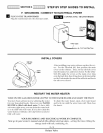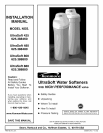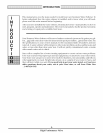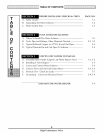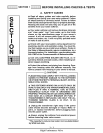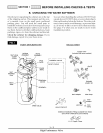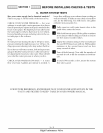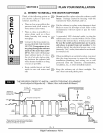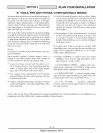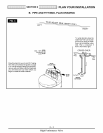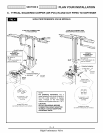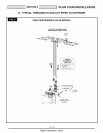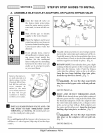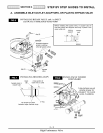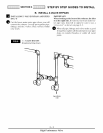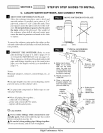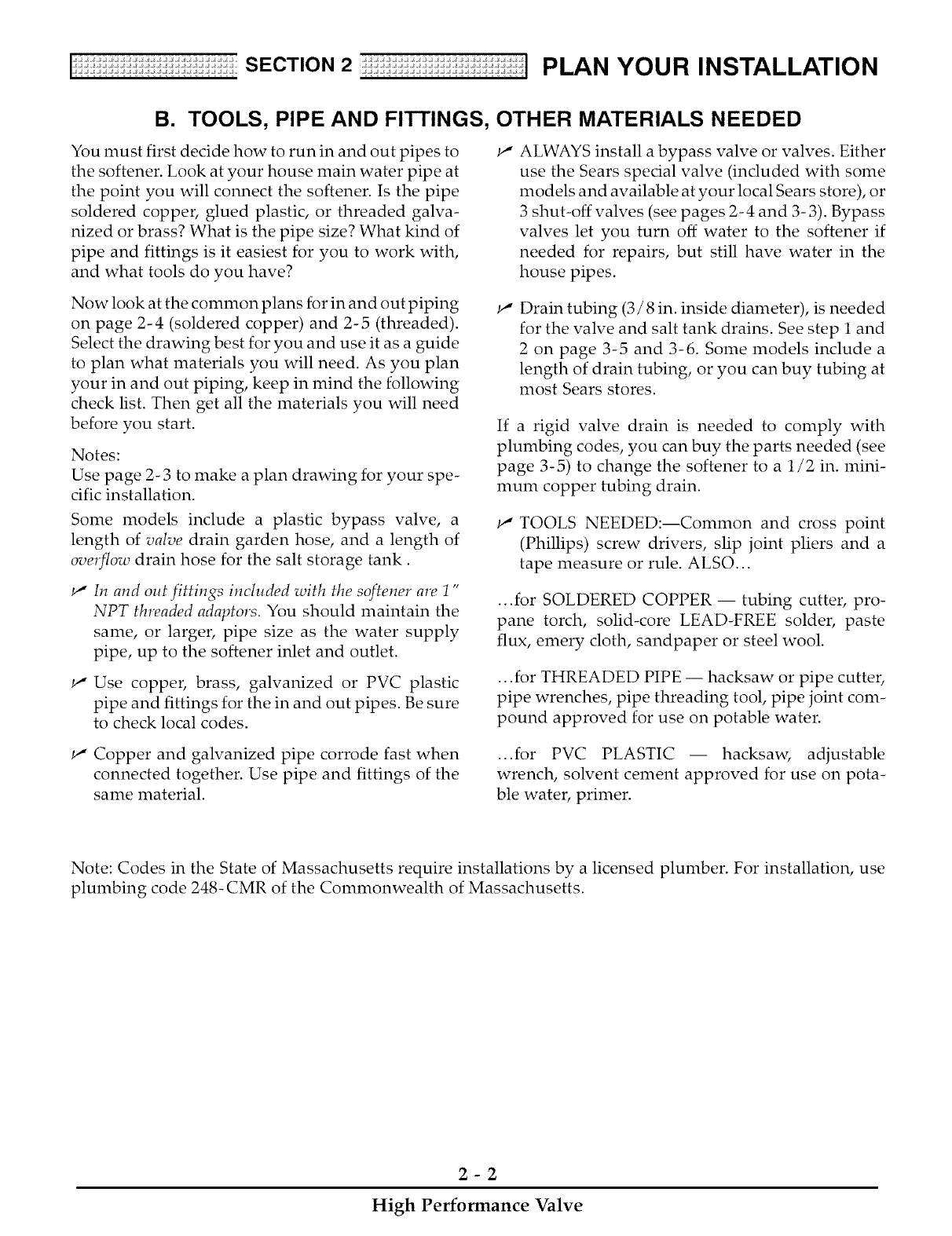
SECTION2 PLAN YOUR INSTALLATION
B. TOOLS, PIPE AND FITTINGS, OTHER MATERIALS NEEDED
You must first decide how to run in and out pipes to
the softener. Look at your house main water pipe at
the point you will connect the softener. Is the pipe
soldered copper, glued plastic, or threaded galva-
nized or brass? What is the pipe size? What kind of
pipe and fittings is it easiest for you to work with,
and what tools do you have?
ALWAYS install a bypass valve or valves. Either
use the Sears special valve (included with some
models and available at your local Sears store), or
3 shut-off valves (see pages 2-4 and 3-3). Bypass
valves let you turn off water to the softener if
needed for repairs, but still have water in the
house pipes.
Now look at the common plans for in and out piping
on page 2-4 (soldered copper) and 2-5 (threaded).
Select the drawing best for you and use it as a guide
to plan what materials you will need. As you plan
your in and out piping, keep in mind the following
check list. Then get all the materials you will need
before you start.
Notes:
Use page 2-3 to make a plan drawing for your spe-
cific installation.
Some models include a plastic bypass valve, a
length of valve drain garden hose, and a length of
overflow drain hose for the salt storage tank.
In and out fittings included with the softener are 1"
NPT threaded adaptors. You should maintain the
same, or larger, pipe size as the water supply
pipe, up to the softener inlet and outlet.
Use copper, brass, galvanized or PVC plastic
pipe and fittings for the in and out pipes. Be sure
to check local codes.
Drain tubing (3/8 in. inside diameter), is needed
for the valve and salt tank drains. See step i and
2 on page 3-5 and 3-6. Some models include a
length of drain tubing, or you can buy tubing at
most Sears stores.
If a rigid valve drain is needed to comply with
plumbing codes, you can buy the parts needed (see
page 3-5) to change the softener to a 1/2 in. mini-
mum copper tubing drain.
TOOLS NEEDED:--Common and cross point
(Phillips) screw drivers, slip joint pliers and a
tape measure or rule. ALSO...
...for SOLDERED COPPER -- tubing cutter, pro-
pane torch, solid-core LEAD-FREE solder, paste
flux, emery cloth, sandpaper or steel wool.
...for THREADED PIPE -- hacksaw or pipe cutter,
pipe wrenches, pipe threading tool, pipe joint com-
pound approved for use on potable water.
Copper and galvanized pipe corrode fast when
connected together. Use pipe and fittings of the
same material.
...for PVC PLASTIC -- hacksaw, adjustable
wrench, solvent cement approved for use on pota-
ble water, primer.
Note: Codes in the State of Massachusetts require installations by a licensed plumber. For installation, use
plumbing code 248- CMR of the Commonwealth of Massachusetts.
2-2
High Performance Valve



